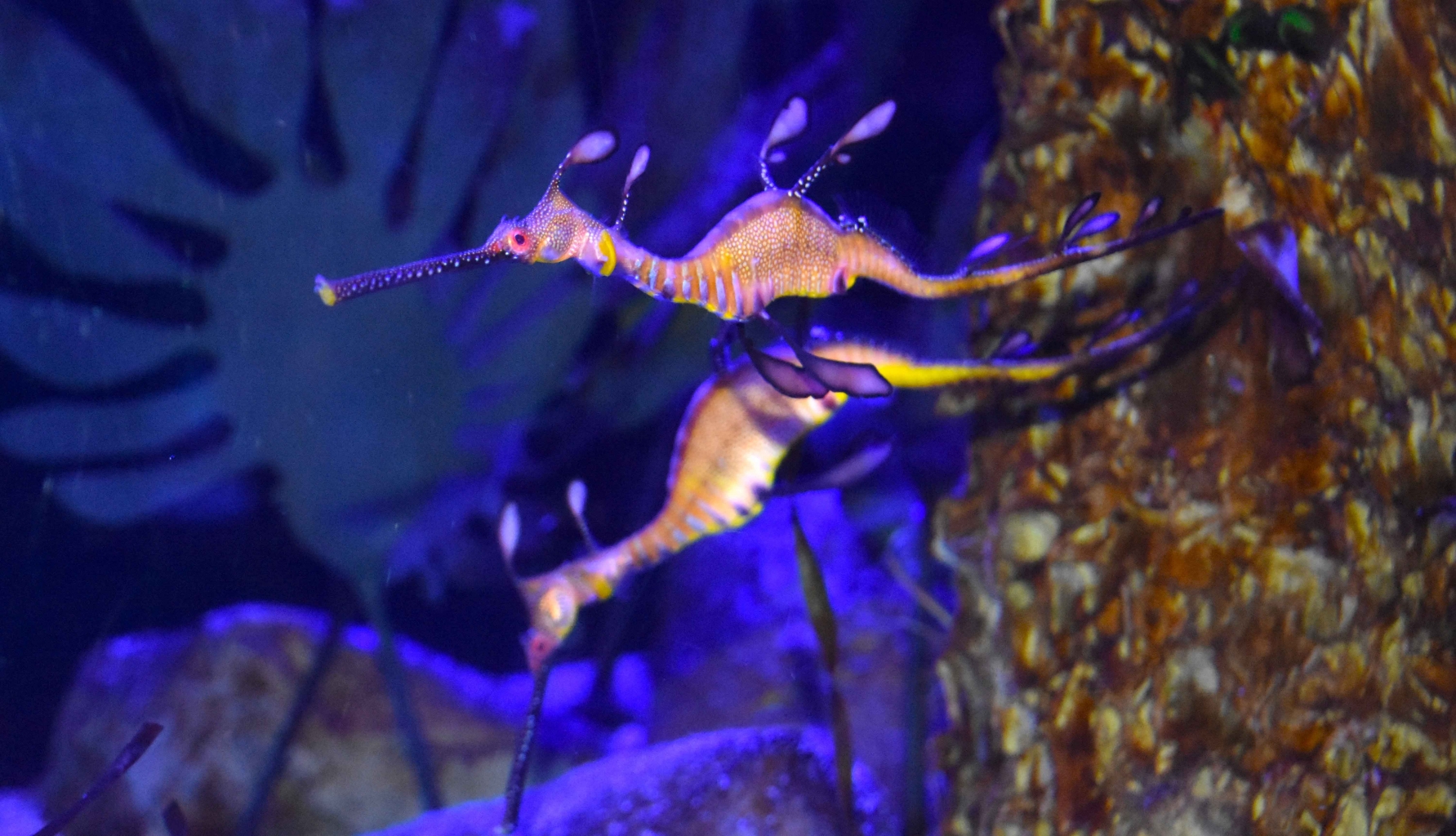Discovery Bay at the Minnesota Zoo is home to rare ocean animals like the leafy seadragons and weedy seadragons, which are as uncommon as four-leaf clovers. The Zoo is among the few facilities worldwide capable of providing the proper care for seadragons, and they have been doing so for 20 years. Christoph Noetzli, the Zoo’s Curator of Aquariums, highlights the importance of showcasing these unique creatures to the public.
Seadragons are skilled at camouflage, blending their coloration and appendages with their aquatic environment. They are relatives of seahorses and are also fish, with bony plates covering their bodies. The Minnesota Zoo maintains nine seadragons from two species and is one of the few institutions to house them in the U.S.
Dan Peterson, the Assistant Curator of Aquariums at the Zoo, specializes in seadragon care with over 4,700 hours of SCUBA diving experience. Seadragons are treated in highly controlled conditions, with their tank environment carefully monitored to imitate their natural habitat off the southern Australian coast.
At the Zoo, the seadragons have been trained to eat frozen mysid shrimp instead of costly live alternatives. Furthermore, male seadragons, similar to their seahorse cousins, play an active role in reproduction by incubating and giving birth to the offspring.
Seadragons face dangers due to habitat loss and pollution in their native southern and western Australia. Despite not being categorized as threatened by the IUCN, tracking their wild populations is challenging. The leafy seadragon is particularly rare, and one of the last transported into the U.S. before the COVID-19 pandemic resides in the Minnesota Zoo.
Visitors to the Minnesota Zoo can experience the enchantment of seadragons in Discovery Bay and learn about their delicate beauty and significance to marine biodiversity.
– Exceptional ocean dwellers: Discovering the leafy and weedy seadragons at Minnesota Zoo.
– Expert nurturing: Insights into the meticulous care provided by the Minnesota Zoo for these rare species.
– Camouflage champions: Understanding the remarkable mimicry of seadragons as a survival strategy.
– Nurturing future generations: The peculiar parental roles of seadragon males in reproduction.
– Conservation efforts: The significance of protecting these vulnerable species for biodiversity.
—
Imagine stepping into a world where creatures straight out of a fantasy novel glide through the water, surrounded by a tapestry of vibrant colors and delicate movements. At the Minnesota Zoo, this fantasy becomes a reality in Discovery Bay, where you can encounter the aquatic enigmas known as leafy and weedy seadragons.
These remarkable beings are as rare as they are captivating, akin to mythical monsters hidden in plain sight. The opportunity to observe these seadragons is nothing short of a privilege granted to few facilities worldwide. This is partly due to the specialized knowledge and precise conditions required to nurture such delicate oceanic flora and fauna.
Their striking appearance is enigmatic – these fish have perfected the art of disguise, using their ornate appendages to mimic the swaying seaweed and kelp of their home waters. Their balletic movements are slow and calculated, ensuring that even the sharpest eyes might second-guess, distinguishing them from their plant-like counterparts.
If you ever see a leafy seadragon, often affectionally termed ‘leafies,’ you will bear witness to a living artwork. Their appendages are more elaborate than their weedy relatives, giving them an appearance of floating vegetation. The mesmerizing patterns and colors that grace their bodies are a testament to nature’s palette – an intricate blend of hues ranging from honeyed gold to rich purples, dotted with intricate patterns that make each seadragon an original masterpiece.
Such delicate creatures necessitate equally careful and consistent attention. Dive into the underwater workflow of the Zoo’s diligent aquarists and learn how every siphoned grain of sand contributes to the seadragons’ well-being. It’s a labor of love and expertise, ensuring these animals flourish in an environment that emulates their native cold-water kelp forests to the perfect water temperature of 58°F.
Among the most compelling aspects of these seadragons’ lives is how they propagate their lineage. The males, easily discernible by their swollen, egg-adorned tails, undertake parenting responsibilities uncharacteristic of most other fish species. They incubate the eggs and experience a sort of childbirth, contributing profoundly to the species’ fragile existence.
Not many have observed the intimate courtship between seadragons, a spectacle where partners mirror each other’s movements in a graceful underwater waltz. Such a dance is not merely for show but is critical to their life cycle. Although their breeding in captivity remains a substantial hurdle, persistence and knowledge-sharing among experts worldwide may soon unlock this mystery.
Alas, even being an emblem in their local waters does not shield the seadragons from perils. The forces threatening their existence are manifold, including habitat destruction and pollution, reminding us of their vulnerability and the fragility of natural wonders worldwide. Efforts to protect them, therefore, become not only acts of conservation but of respect towards biodiversity itself.
Venture to the Minnesota Zoo and immerse yourself in the underwater realm of the seadragons. It’s an experience where the line between flora and fauna blurs, inviting introspection about our coexistence with nature’s marvels. In a world teeming with extraordinary life, the seadragons are a reminder of the patient stewardship required to offer future generations a glimpse of the wild’s ineffable beauty.


